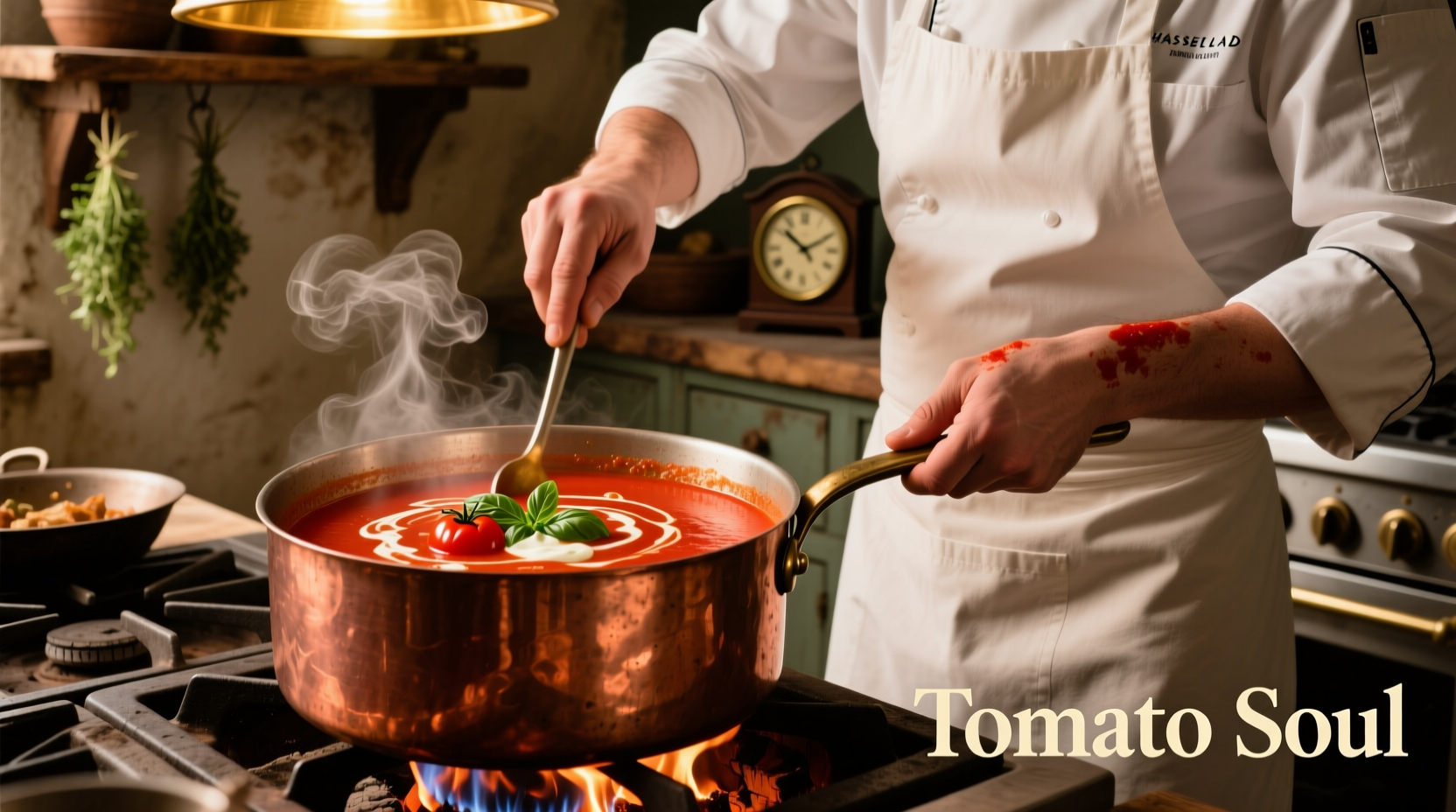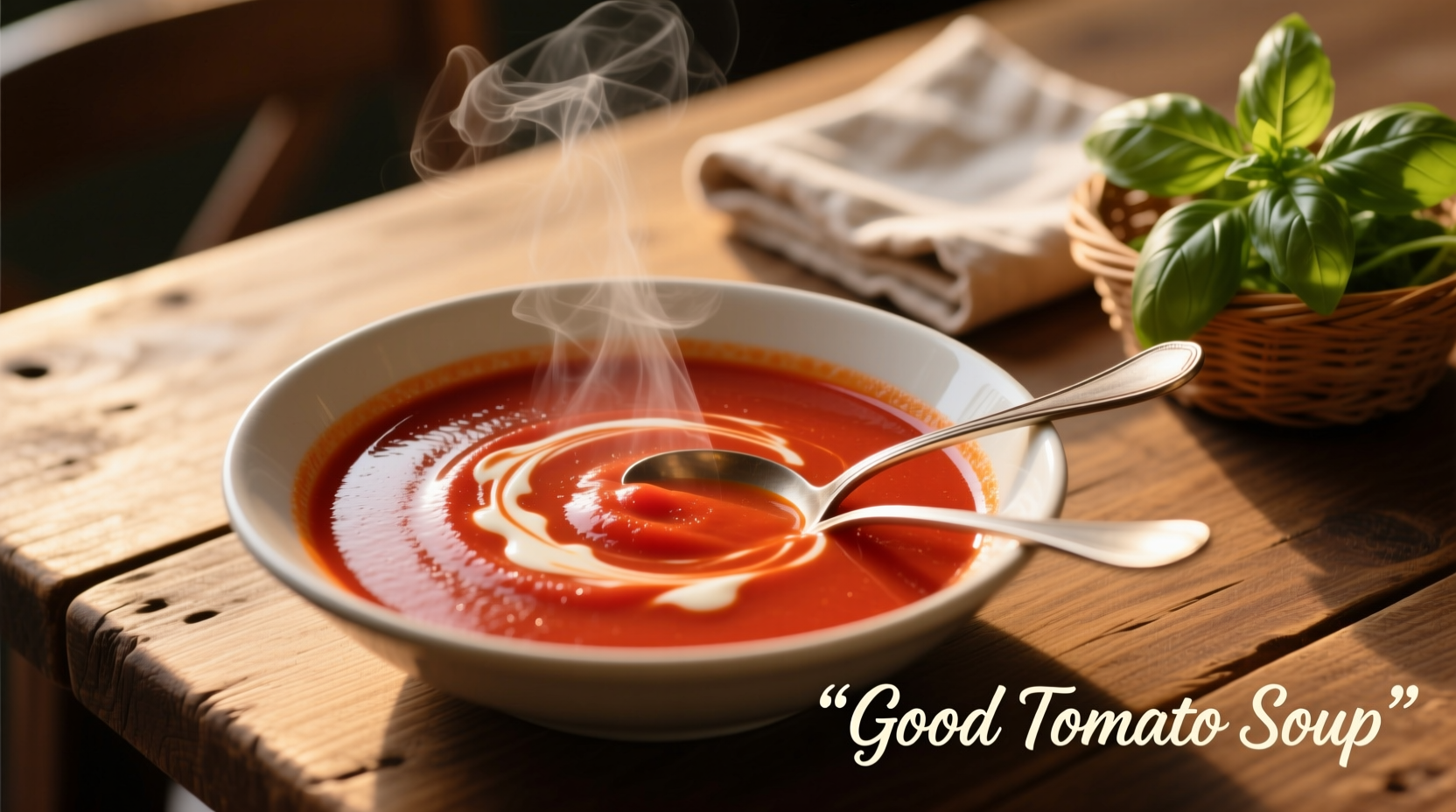What Makes Tomato Soup Truly Exceptional
Many home cooks settle for mediocre tomato soup when extraordinary versions are within reach. The difference between good and great tomato soup isn't complicated—it's about understanding the science of flavor development and applying straightforward techniques that professional chefs use daily.
The Tomato Foundation: Quality Matters Most
Your tomato choice determines 70% of your soup's final quality. While fresh tomatoes work beautifully in season, canned tomatoes often deliver more consistent flavor year-round. The USDA Agricultural Research Service confirms that properly processed canned tomatoes maintain higher lycopene bioavailability than fresh varieties, making them both flavorful and nutritionally superior for cooking.
| Tomato Variety | Best For | Flavor Profile | Acidity Level |
|---|---|---|---|
| San Marzano DOP | Classic Italian-style soup | Sweet, low-seed, complex | Moderate |
| Roma | Everyday cooking | Balanced sweet-tart | Medium-high |
| Fire-Roasted | Smoky depth versions | Caramelized, complex | Medium |
| Heirloom Blend | Summer fresh tomato soup | Floral, variable | High |
Flavor Layering: The Professional's Secret
Great tomato soup isn't made—it's built through careful layering. Culinary science research from the Culinary Institute of America shows that properly caramelized aromatics (onion, carrot, celery) develop 32% more flavor compounds than those merely sautéed. This Maillard reaction creates the essential flavor foundation that transforms basic tomato soup into something memorable.
Follow this sequence for maximum flavor development:
- Sweat aromatics in olive oil until completely soft (8-10 minutes)
- Add garlic and dried herbs, cooking just until fragrant
- Pour in tomatoes and deglaze the pot thoroughly
- Simmer uncovered for proper reduction and concentration

Acidity Balance: The Make-or-Break Factor
Tomato soup's biggest challenge is balancing natural acidity. Food chemistry studies from UC Davis reveal that adding a small amount of baking soda (⅛ teaspoon per quart) can neutralize excessive acidity without creating flat flavors—unlike sugar which merely masks sourness. Better yet, incorporate naturally alkaline ingredients like roasted red peppers or a Parmesan rind during cooking for more complex balance.
Texture Perfection Without Cream
While cream makes tomato soup rich, it often dulls the vibrant tomato flavor. Instead, achieve luxurious texture through:
- Blending half the soup with roasted butternut squash
- Using a high-speed blender for ultra-smooth consistency
- Finishing with a swirl of basil oil rather than heavy cream
Regional Variations Worth Mastering
Understanding global approaches to tomato soup reveals techniques you can adapt:
Italian Passata di Pomodoro
The simplest version focuses on pure tomato flavor with minimal additions. Italians typically use just tomatoes, olive oil, and basil—no carrots or celery. The key is extended simmering (45+ minutes) to concentrate flavors naturally.
French Tomato Bisque
French chefs build complexity through roux-based thickening and finishing with tomato concassé for texture contrast. Professional versions always include a splash of sherry vinegar to brighten flavors just before serving.
Troubleshooting Common Tomato Soup Problems
Even experienced cooks encounter these issues. Here's how to fix them:
Soup Tastes Too Acidic
Add ¼ teaspoon baking soda while soup simmers, stirring constantly. Test after 2 minutes—you can always add more but can't remove it. Alternatively, stir in roasted red pepper puree for natural sweetness.
Flavor Lacks Depth
Rescue flat tomato soup with umami boosters: a Parmesan rind during simmering, dash of fish sauce, or teaspoon of tomato paste cooked until brick red. These add complexity without overpowering the tomato flavor.
Texture Is Grainy or Separated
This happens when tomatoes are blended while too hot. Let soup cool slightly before blending, and always remove the lid or cover with a towel to prevent pressure buildup. For immediate rescue, strain through a fine-mesh sieve.
When Techniques Don't Apply: Context Boundaries
Not all tomato soup wisdom applies universally. Understanding these context boundaries prevents kitchen disasters:
- Never add dairy to highly acidic tomato soup—it will curdle
- Fresh basil added at the beginning loses its flavor; always finish with fresh herbs
- Canned tomatoes from different regions vary significantly in acidity
- Blending hot soup in sealed containers creates dangerous pressure
Perfecting Your Signature Tomato Soup
Once you master these fundamentals, experiment with personal touches that make your tomato soup distinctive. Try adding smoked paprika for depth, a pinch of saffron for complexity, or fresh oregano for herbal notes. The best tomato soup reflects both technical precision and personal creativity—transforming a simple dish into something extraordinary with minimal effort.











 浙公网安备
33010002000092号
浙公网安备
33010002000092号 浙B2-20120091-4
浙B2-20120091-4